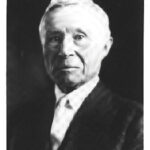The shoe company Adidas was born out of the back of a bakery in Germany when a young man named Adolph Dassler began making the shoes that would eventually be the Adidas we know today. Before the full company of Adidas shoes was founded, Adolph had an inclination toward sports apparel. This founder of Adidas had a great interest in sports and was interested in designing shoes that would be conducive to athletics. He was joined by his brother and established the Dassler Brothers Shoe Factory-a company dedicated to designing and making athletic shoes. This new company, before it became Adidas as we know it today, was the first to introduce studs and spikes to shoes for track athletes as well as pioneers in the concept of arch support systems. The company that would become Adidas shoes amassed a number of patents and new innovations that allowed them attain an edge on their market from the very beginning. By taking on marketing projects such as giving away free shoes to the competitors in the 1926 Olympic Games the company achieved international recognition of their trademark double-striped athletic shoes. After the Second World War the company dissolved and a feud between the two brothers ensued. Adi went on to form Adidas and registered the three-stripe trademark in 1949. Adi Dassler, no longer speaking with his brother and contending with competition from Puma kept on innovating like he has done before, especially with his track shoes. The Adidas brand continued to develop until they had cornered 75 percent of the track and field market. This success of Adidas was enhanced in the 1970s by marketing brand-name apparel which bolstered the company’s image in the mind of millions of teenagers. When Adi Dassler passed away in 1978, his company still had the market cornered but Nike was beginning to grow in popularity. When Horst Dassler died, Adidas began a series of new owners as well as increasing competition from other shoemakers. Although sales began to increase again because renewed interest in the 1970s style, the company still trailed behind Nike and Reebok. Sales did begin to climb again under Hainer’s leadership, mostly because of continued sponsorships in the Olympic Games.
One of the greatest strengths of the business of Adidas is that it has the weight of history behind it-it has the name, which has been developed and built for so many years. In addition to this, it also has the benefit of having leaders who are willing to engage in risk-taking. From its very inception, the company has realized how important it is to build a brand. From the initial decision to allow their shoes to be given away at the 1929 Olympics, too its choice to have a simple but memorable logo, Adidas has understood the power of branding. As a result, Adidas has had a rich and long history and images of its brands extend back through those Olympics and are most resonant in the 1970s when the brand enjoyed great popularity. Although it is not enough for a company to have history, Adidas has managed to have this history without getting stale. One reason why they have not been “history” and that alone is that they are willing to make changes through acquisitions-even if they are risky. Although it has created some problems for Adidas in the past, engaging in risky acquisitions (often at the advice of investors and market analysts) has been incredibly beneficial, particularly in the case of its acquiring of Salomon. Even though it can still be said that it might be sheer luck that eventually allowed the Salomon acquisition to allow profits, the fact remains that this risk did pay off. By selling these off the company Adidas took another risk, but by this time they had achieved a better focus. Furthermore, by taking the risk of expanding into Asia and opening retail stores, Adidas was able to have great success in that market.
One of the greatest weaknesses of Adidas is its persistent lack, until recently, of focus. Many of the numerous problems with Adidas as a business stem from this (as well as overt risk-taking) and it was not until it realized this that its financial situation began to improve. When Adidas acquired Salomon and TaylorMade, they were not thinking ahead and suffered from an incredible lack of focus. Just as analysts suggested, it was not a good idea for such a specifically athletic company that made shoes and other gear to branch out to more far-reaching areas of the sporting goods market. It was not until Adidas shoes finally decided to sell these two brands and all of their associated manufacturing issues that they finally got on track again, fiscally speaking. Although risk-taking is one of the elements that has allowed the company to succeed, some of these risks were completely reckless. By finally realizing this and selling off brands that were far too out of touch with their initial mission the company could have some degree of balance and focus.
By going back to their roots in terms of marketing efforts, Adidas has the opportunity to skyrocket ahead of Nike by pursuing different advertising and marketing ventures. This is because it has a rich history, both in the American and European markets and now in the Asian markets as well. Early branding efforts have allowed the company to be associated with longevity and this marks one key future aspect to the company’s success.
While Nike has relied on sports stars such as Michael Jordan, this is because it is a newer company and thus does not have the historical base that Adidas does. If the company can keep itself fresh with innovative marketing solutions that differ from its competitors and can make smart acquisitions as it did with Reebok, then it stands a chance for success. This will take focus, an element which the company has lacked for some time, but once this is achieved and the company concentrates almost solely on its shoes and apparel, it could corner the market and see higher revenue and greater levels of competition with Nike. The company’s biggest threat comes from Nike who has hitherto controlled the market that Adidas has sought to possess.



